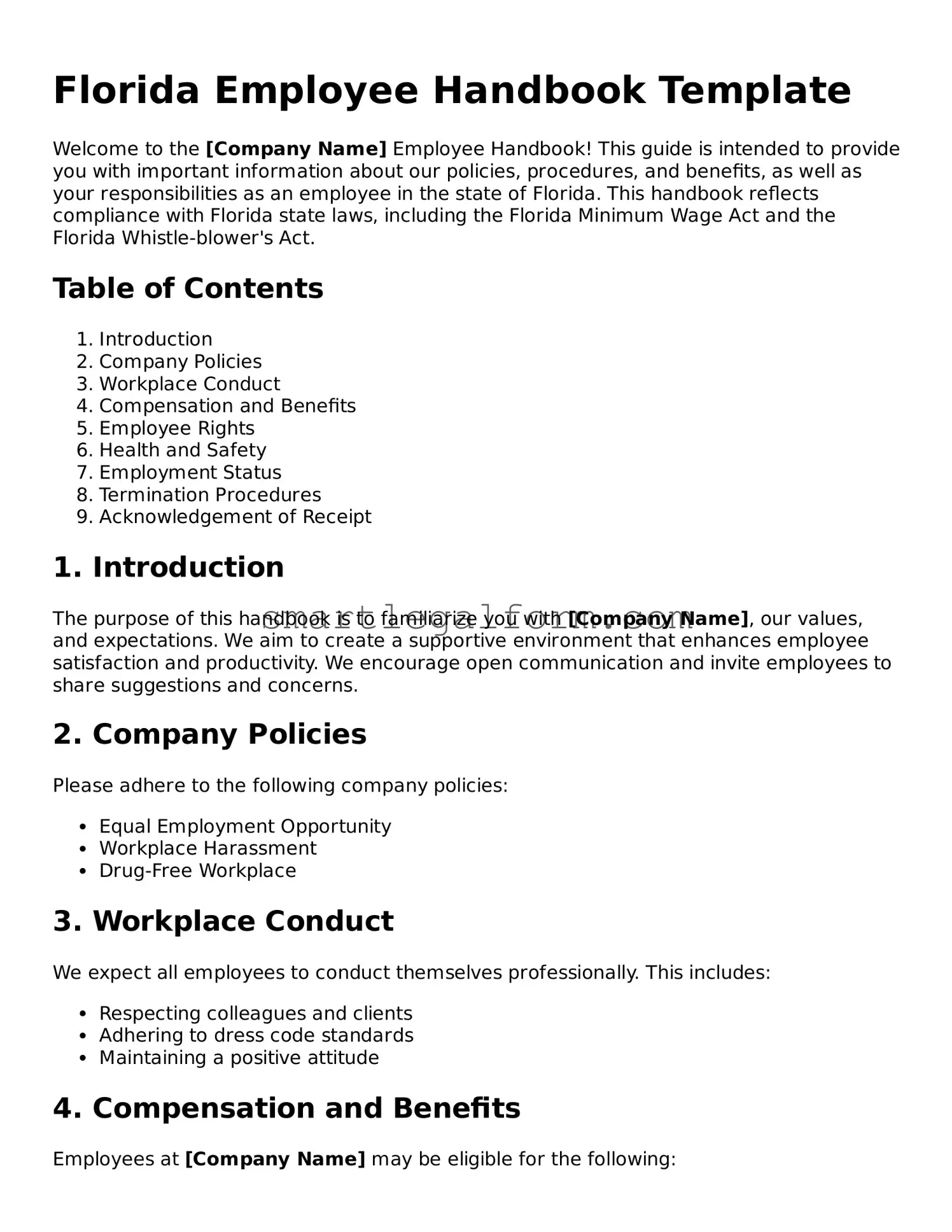Florida Employee Handbook Template
Welcome to the [Company Name] Employee Handbook! This guide is intended to provide you with important information about our policies, procedures, and benefits, as well as your responsibilities as an employee in the state of Florida. This handbook reflects compliance with Florida state laws, including the Florida Minimum Wage Act and the Florida Whistle-blower's Act.
Table of Contents
- Introduction
- Company Policies
- Workplace Conduct
- Compensation and Benefits
- Employee Rights
- Health and Safety
- Employment Status
- Termination Procedures
- Acknowledgement of Receipt
1. Introduction
The purpose of this handbook is to familiarize you with [Company Name], our values, and expectations. We aim to create a supportive environment that enhances employee satisfaction and productivity. We encourage open communication and invite employees to share suggestions and concerns.
2. Company Policies
Please adhere to the following company policies:
- Equal Employment Opportunity
- Workplace Harassment
- Drug-Free Workplace
3. Workplace Conduct
We expect all employees to conduct themselves professionally. This includes:
- Respecting colleagues and clients
- Adhering to dress code standards
- Maintaining a positive attitude
4. Compensation and Benefits
Employees at [Company Name] may be eligible for the following:
- Competitive salary
- Health insurance
- Retirement savings plans
- Paid time off
5. Employee Rights
Employees in Florida have specific rights including, but not limited to:
- The right to a workplace free from discrimination
- The right to report unethical behavior
- The right to be paid for all hours worked
6. Health and Safety
The health and safety of our employees is a top priority. We are committed to providing a safe workplace, which includes:
- Regular safety training
- Maintaining clean workspaces
- Immediate reporting of workplace hazards
7. Employment Status
Understanding your employment status is key. Note that:
- All employees are “at-will,” meaning either party may terminate employment at any time, with or without cause.
- Both full-time and part-time positions exist within [Company Name].
8. Termination Procedures
Should employment end, certain procedures must be followed:
- Return of company property
- Completion of exit interviews
- Final paycheck processing
9. Acknowledgement of Receipt
Employees are required to sign an acknowledgment that they received and understood this handbook. Please fill out the following:
Name: ______________________
Date: ______________________
Thank you for being a part of [Company Name]. We are excited to have you on our team!
